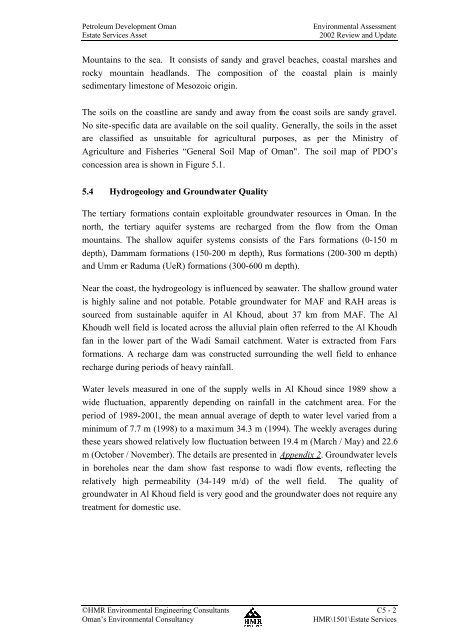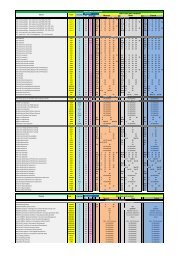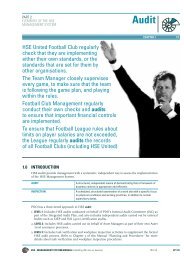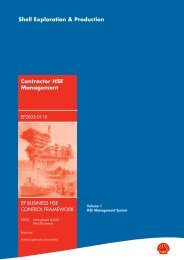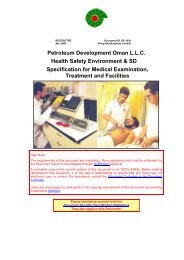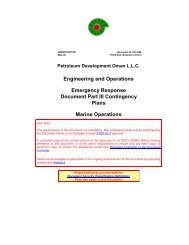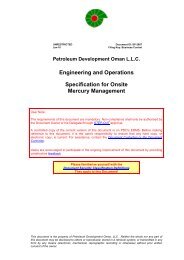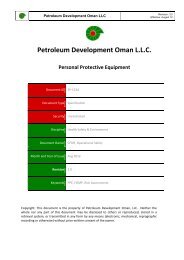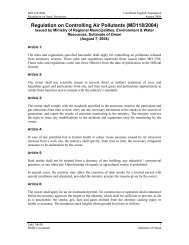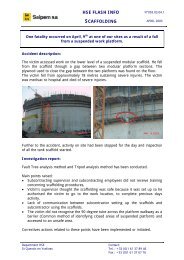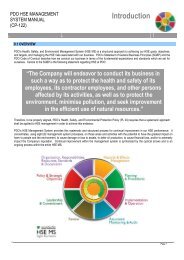Estate Service Asset - PDO
Estate Service Asset - PDO
Estate Service Asset - PDO
You also want an ePaper? Increase the reach of your titles
YUMPU automatically turns print PDFs into web optimized ePapers that Google loves.
Petroleum Development Oman<br />
<strong>Estate</strong> <strong>Service</strong>s <strong>Asset</strong><br />
Environmental Assessment<br />
2002 Review and Update<br />
Mountains to the sea. It consists of sandy and gravel beaches, coastal marshes and<br />
rocky mountain headlands. The composition of the coastal plain is mainly<br />
sedimentary limestone of Mesozoic origin.<br />
The soils on the coastline are sandy and away from the coast soils are sandy gravel.<br />
No site-specific data are available on the soil quality. Generally, the soils in the asset<br />
are classified as unsuitable for agricultural purposes, as per the Ministry of<br />
Agriculture and Fisheries “General Soil Map of Oman". The soil map of <strong>PDO</strong>’s<br />
concession area is shown in Figure 5.1.<br />
5.4 Hydrogeology and Groundwater Quality<br />
The tertiary formations contain exploitable groundwater resources in Oman. In the<br />
north, the tertiary aquifer systems are recharged from the flow from the Oman<br />
mountains. The shallow aquifer systems consists of the Fars formations (0-150 m<br />
depth), Dammam formations (150-200 m depth), Rus formations (200-300 m depth)<br />
and Umm er Raduma (UeR) formations (300-600 m depth).<br />
Near the coast, the hydrogeology is influenced by seawater. The shallow ground water<br />
is highly saline and not potable. Potable groundwater for MAF and RAH areas is<br />
sourced from sustainable aquifer in Al Khoud, about 37 km from MAF. The Al<br />
Khoudh well field is located across the alluvial plain often referred to the Al Khoudh<br />
fan in the lower part of the Wadi Samail catchment. Water is extracted from Fars<br />
formations. A recharge dam was constructed surrounding the well field to enhance<br />
recharge during periods of heavy rainfall.<br />
Water levels measured in one of the supply wells in Al Khoud since 1989 show a<br />
wide fluctuation, apparently depending on rainfall in the catchment area. For the<br />
period of 1989-2001, the mean annual average of depth to water level varied from a<br />
minimum of 7.7 m (1998) to a maximum 34.3 m (1994). The weekly averages during<br />
these years showed relatively low fluctuation between 19.4 m (March / May) and 22.6<br />
m (October / November). The details are presented in Appendix 2. Groundwater levels<br />
in boreholes near the dam show fast response to wadi flow events, reflecting the<br />
relatively high permeability (34-149 m/d) of the well field. The quality of<br />
groundwater in Al Khoud field is very good and the groundwater does not require any<br />
treatment for domestic use.<br />
©HMR Environmental Engineering Consultants C5 - 2<br />
Oman’s Environmental Consultancy<br />
HMR\1501\<strong>Estate</strong> <strong>Service</strong>s


